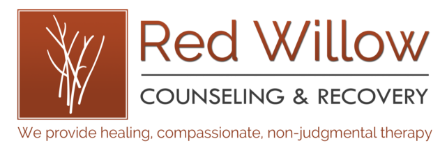
May is Mental Health Awareness Month where many people and organizations work to reduce the stigma around mental illness. The history of this national month is quite rich and has evolved as society has progressed. Spreading awareness and sharing resources for help are the biggest reasons for Mental Health Awareness Month, but other major developments have come from years of recognizing May as Mental Health Month.
How Did Mental Health Awareness Month Start?
Started by Mental Health America/National Association for Mental Health in 1949, this national month started out as Mental Health Week. The goal was and still is, to raise awareness around mental illnesses while reducing the stigma around struggling with mental health. This week-long campaign gained a lot of traction and more organizations wanted to advocate for individuals with mental illness.
As the mental health stigma has evolved, so has Mental Health Awareness Month. Discussions around mental health have been silenced, but public discussion, social media coverage, and resources have become available because of awareness month. Mental Health Awareness Month became a forum for open dialogue, education, and support for others. Talking about depression, anxiety, symptoms, OCD, irrational thoughts, seeking therapy, or seeking rehabilitation is now becoming less taboo to talk about.
Successes That Stemmed From Mental Health Awareness Efforts
Over the past few decades, many organizations have made strides to better serve those with mental illness. Many organizations and the government have increased in understanding, openness, and education. Here are some major successes that have come from celebrating Mental Health Awareness Month and fundraising efforts.
Affordable Care Act
This act helped to expand the coverage of affordable healthcare coverage. An estimated 11 million individuals now have access to substance abuse and mental health resources. This makes therapy, medication, rehab, or other appointments more affordable for the average consumer.
The Garrett Lee Smith State/Tribal Suicide Prevention Program

This program helps the government and the private sector to develop youth suicide prevention. Prevention programs and educational classes are now more common in schools, juvenile justice systems, substance abuse programs, primary care, foster systems, and more! Early detection and evaluation of youth mental health can reduce the number of youth suicides. These programs can also provide proper intervention for suicidal individuals and get them access to the resources they need.
The Mental Health Parity and Addiction Equity Act of 2008
This act eliminated unequal health treatment from group health plans. Individuals with these health plans now can seek mental health resources and substance abuse treatment without limitations on their insurance benefits. Before this act, substance abuse treatment was not covered by group health plans.
Continuing The Work Of Destigmatizing Mental Health
While a lot of work has been done in the mental health world, it is important to recognize the work that still can be done. Continuing the efforts of education and access to resources will be a continuing journey. Advocating for systemic change, promoting diverse voices, and advocating for your own mental health can promote proper mental health discussions.
Additional ways to help further mental health destigmatization and advocate for mental health individuals include:
- Support legislation that improves access to mental health care or resources for mental health research
- Educate yourself on mental illnesses, symptoms, and treatment options, and share your knowledge with others
- Encourage open conversations in your family, workspace, and community
- Foster supportive environments
- Be empathetic and open to learning
- Prioritize your health and mental well-being
- Set boundaries, take breaks, and seek professional help when needed
- Use social media to share resources and facts
- Be an ally and advocate for minority mental health or those with disabilities
- Stay open-minded
Additional Mental Health Awareness Days
Inside of the month of May there are additional mental health days and weeks that may resonate better with you. While all of these days should get a spotlight, we include them in Mental Health Awareness Month to add to the diversity of the topics and resources shared. There are also days throughout the year that cover mental health topics and work being done outside the US.
- National Children Mental Health Awareness Day (May 7)
- Minority Mental Health Month (July)
- Mental Health Awareness Week (mid May)
- National Prevention Week (mid May)
- Mental Illness Awareness Week (First week of October)
- National Depression Screening Day (October 6)
- World Mental Health Day (October 10)

Mental Health Resources From Red Willow
We focus on providing evidence-based therapy for patients of all types. We offer therapy, counseling, IOP, and other resources for individuals, families, and couples. Red Willow also collaborates with other professionals to provide you with a spectrum of healing for your specific mental illness.
No matter what you are struggling with, you are not alone! Mental illness is not a weakness. Our team wants to help you find your strengths and navigate the symptoms of mental health with ease. Reach out to us to schedule an appointment today!





